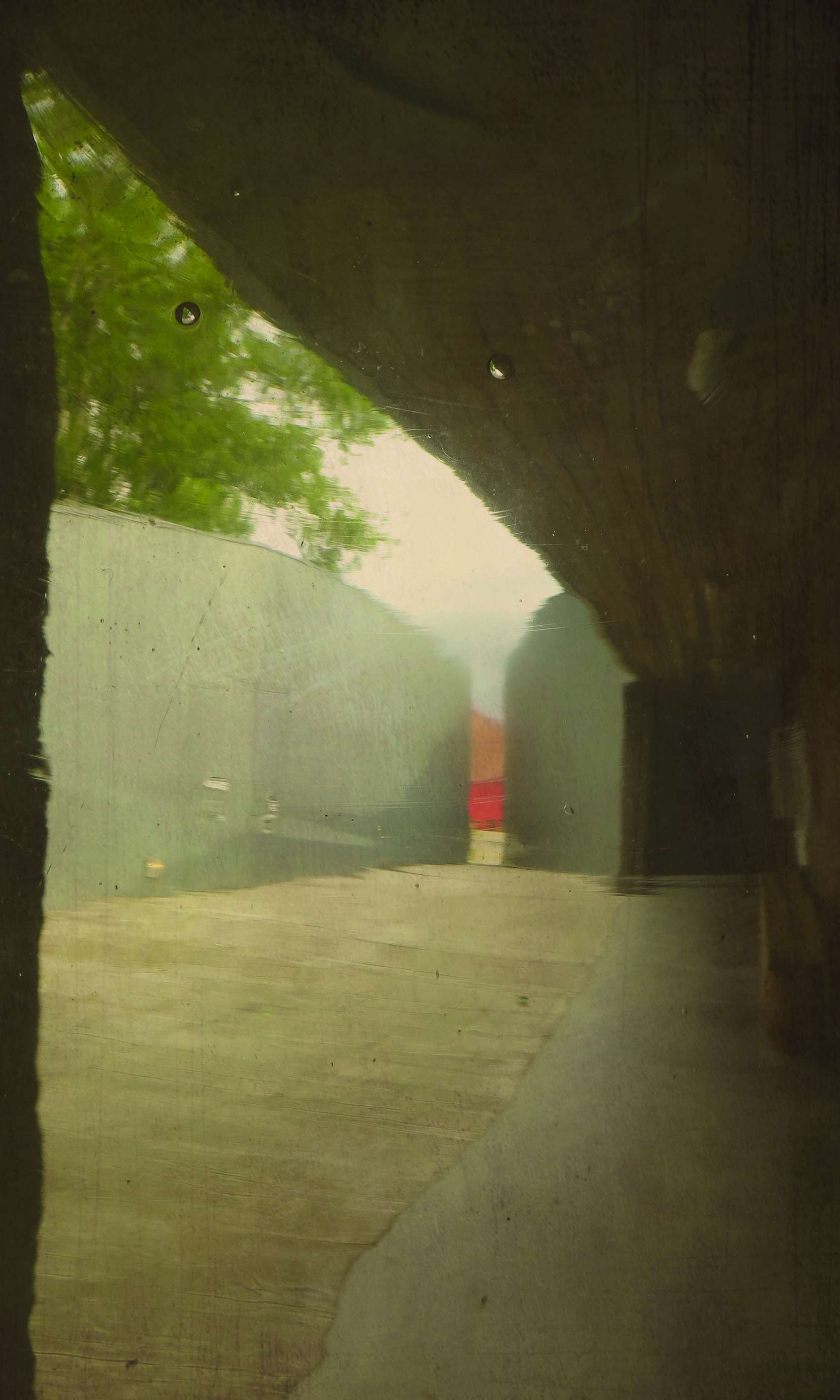
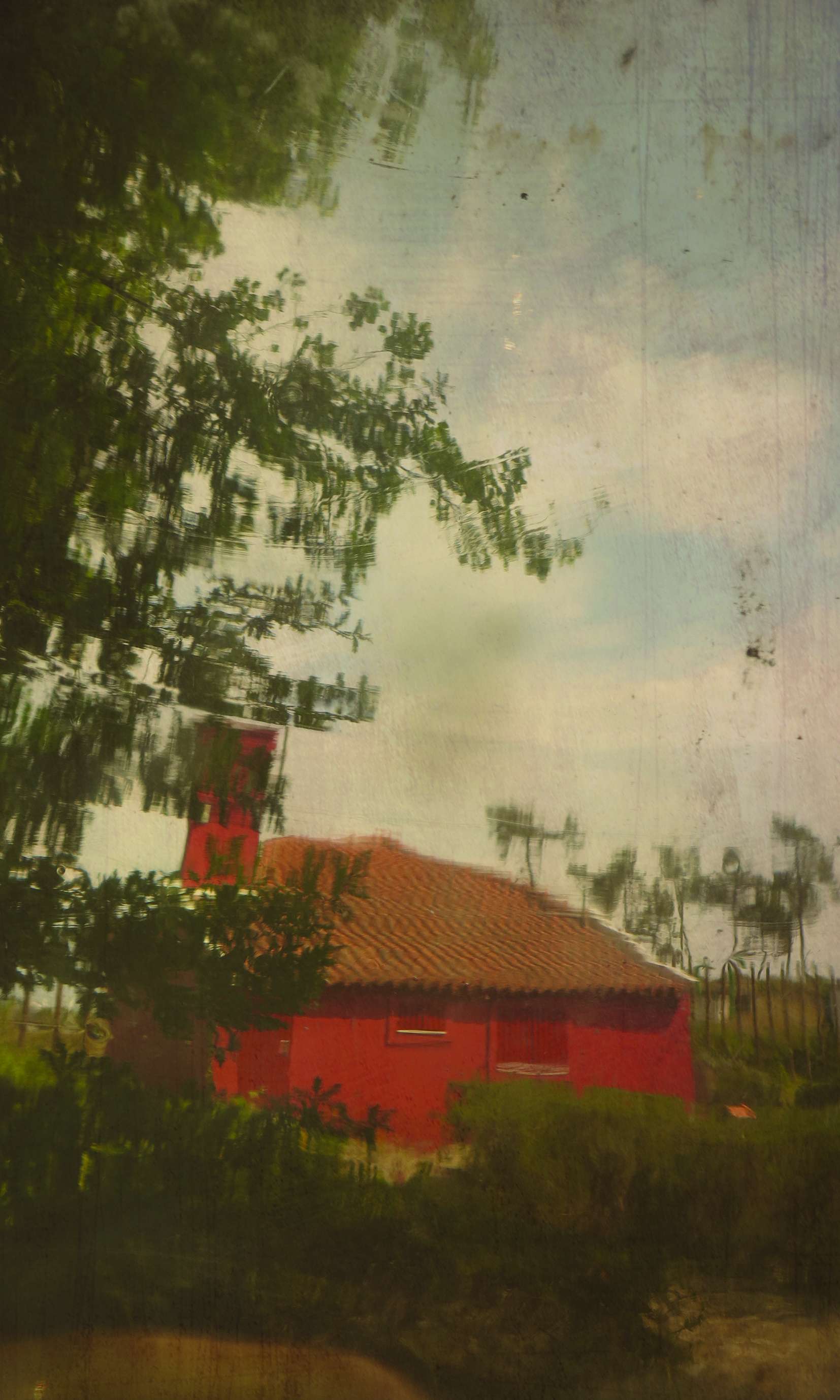
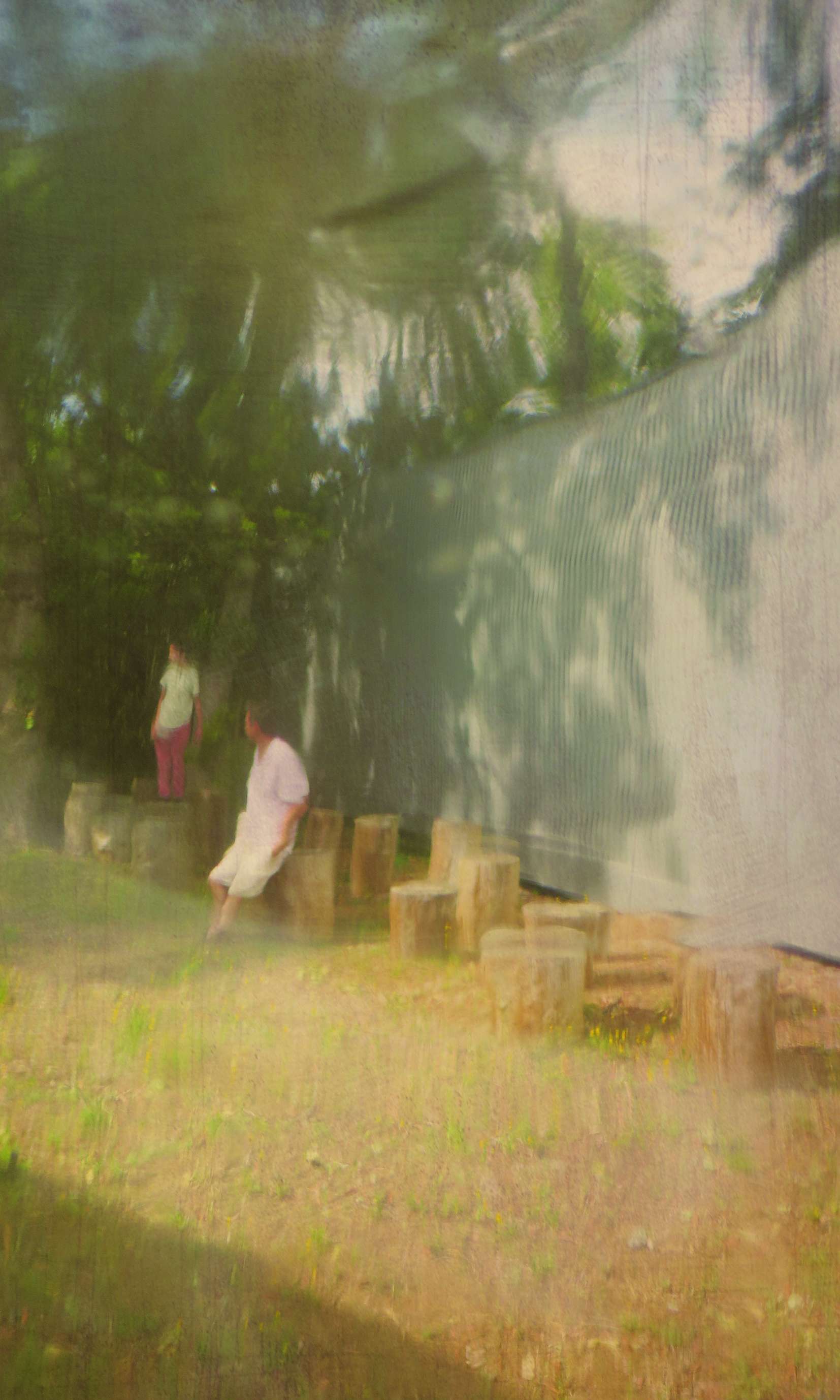
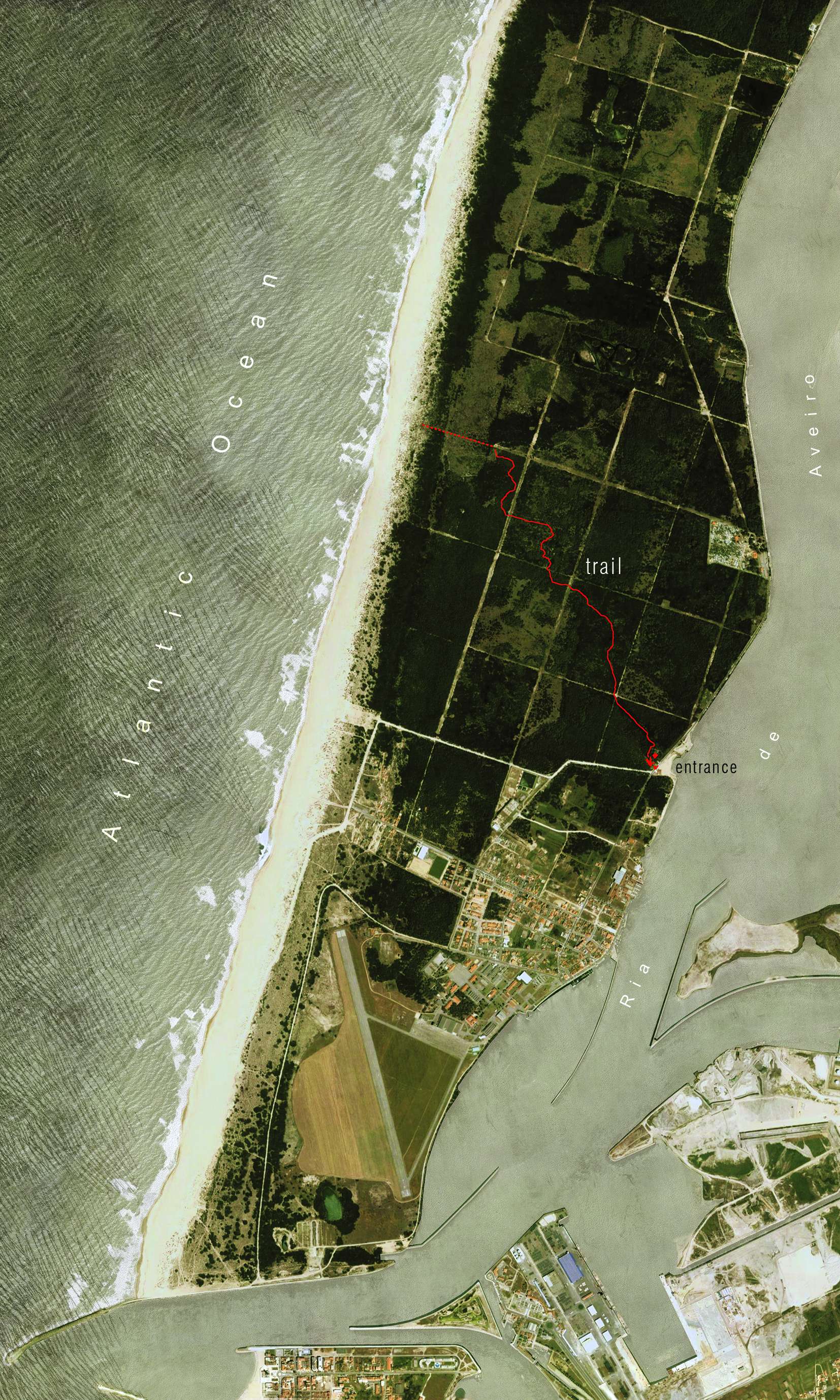

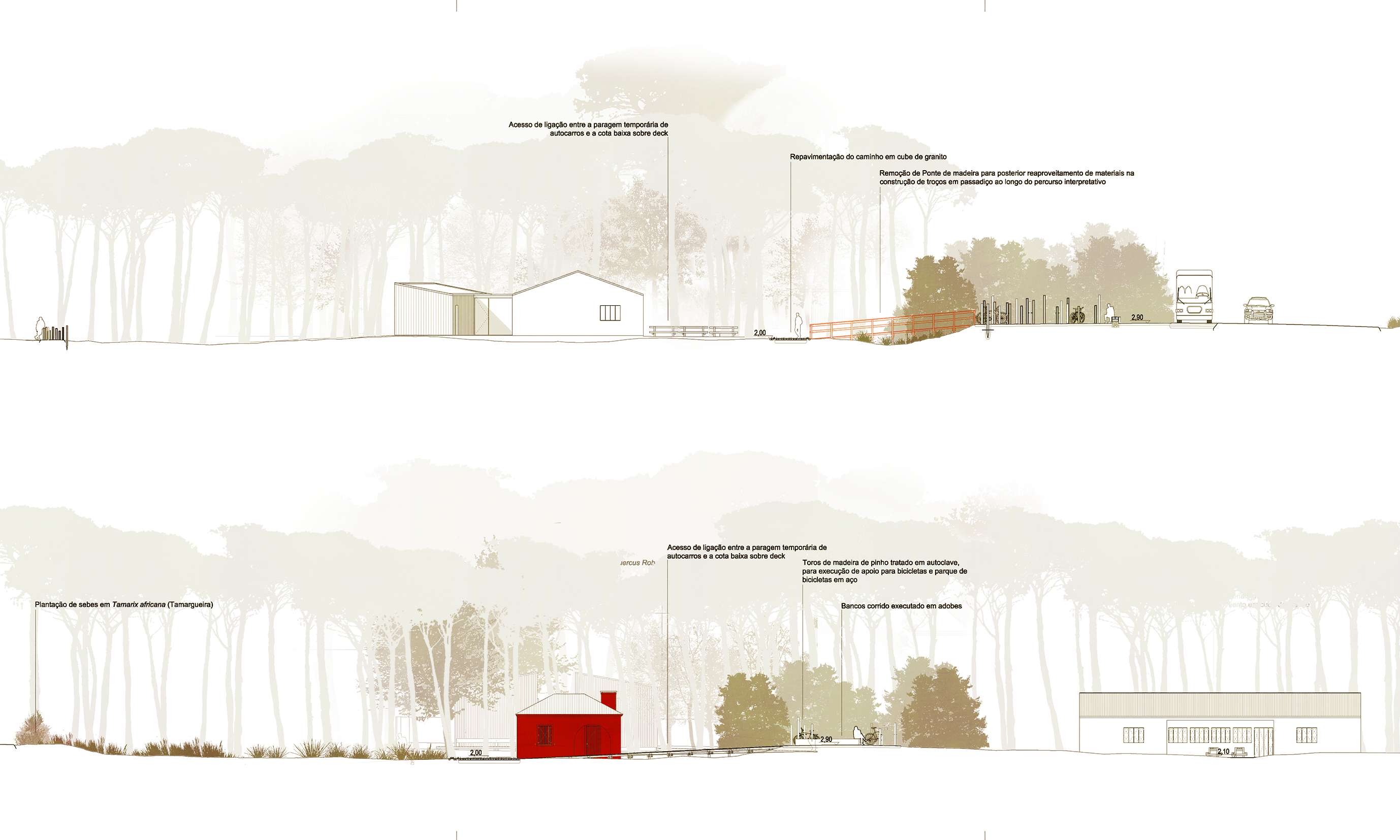
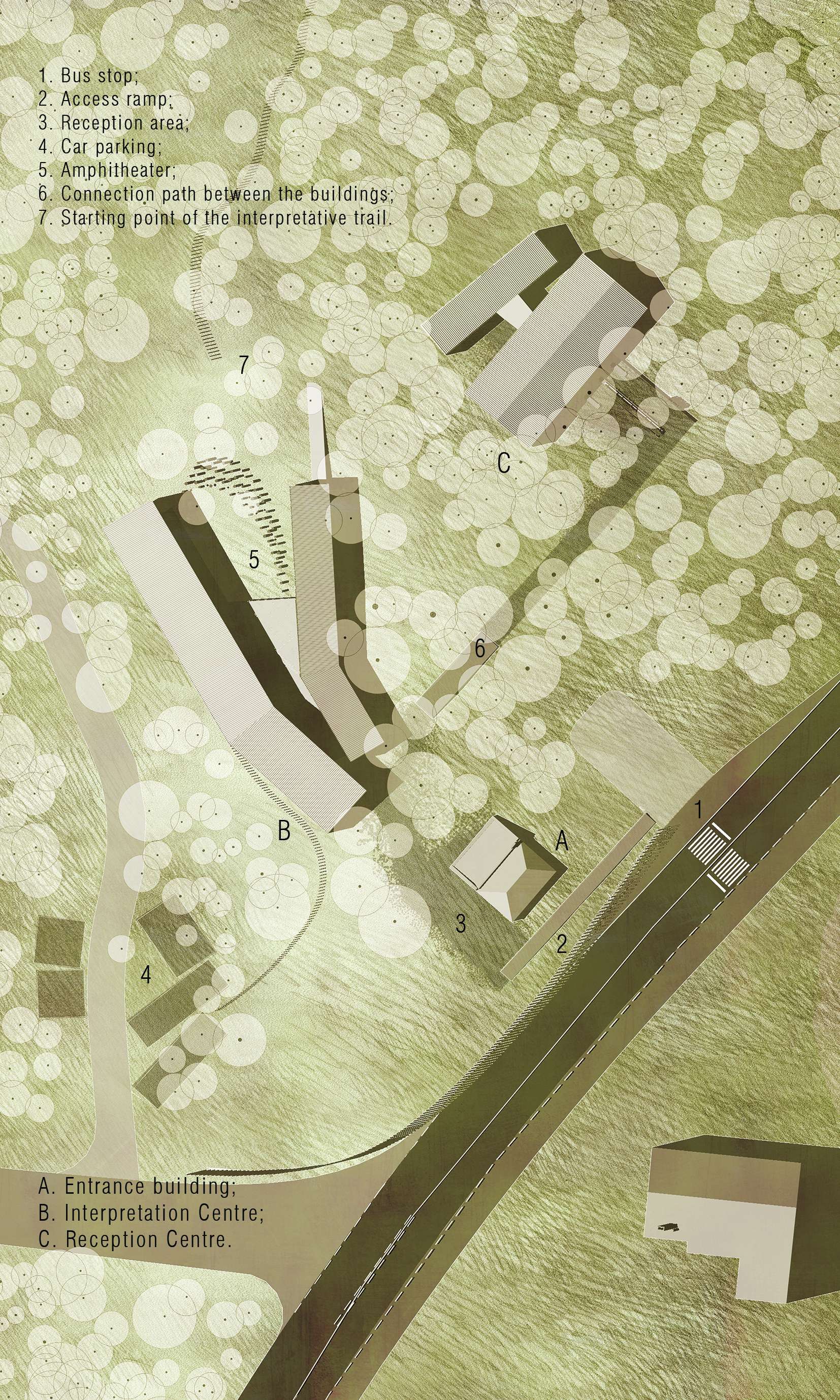
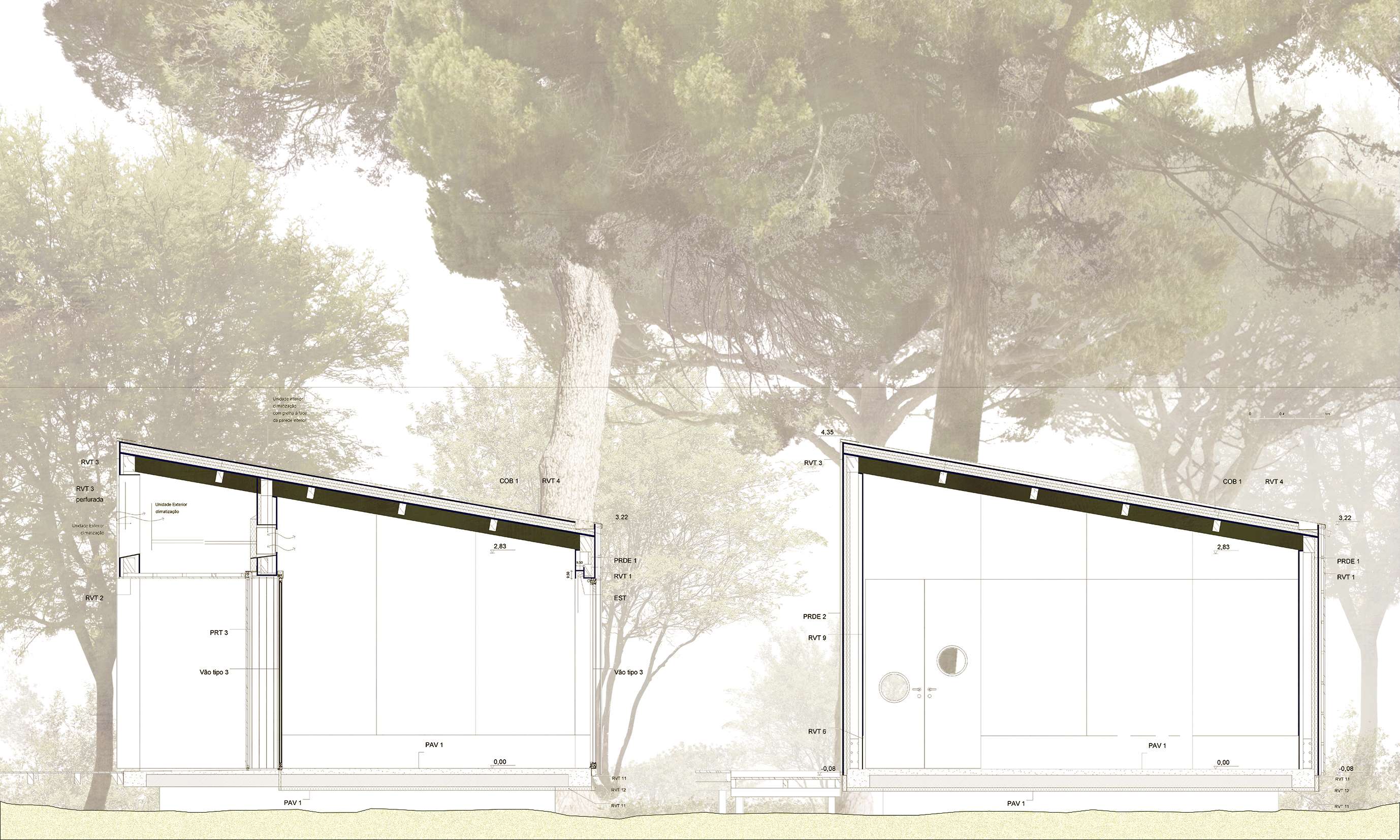
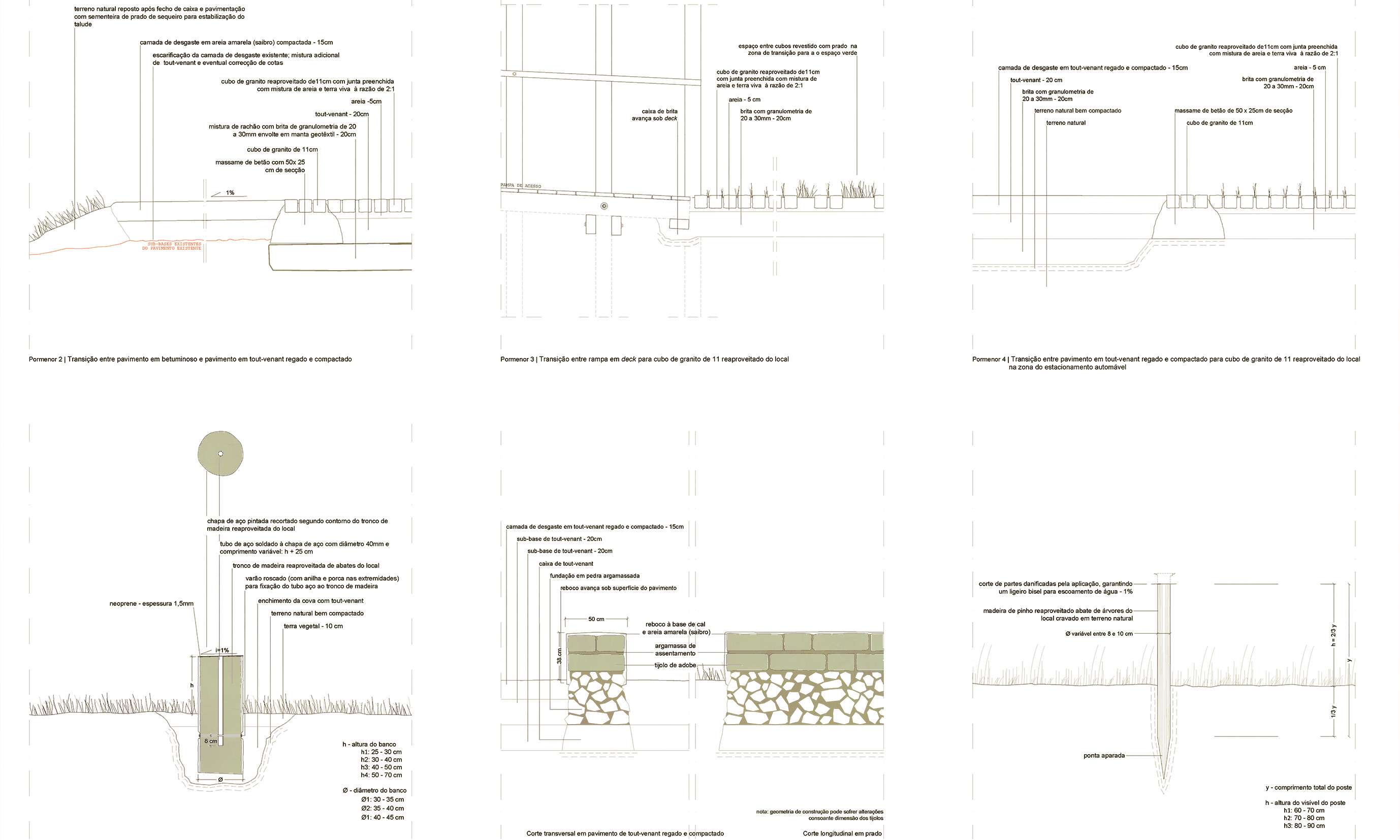
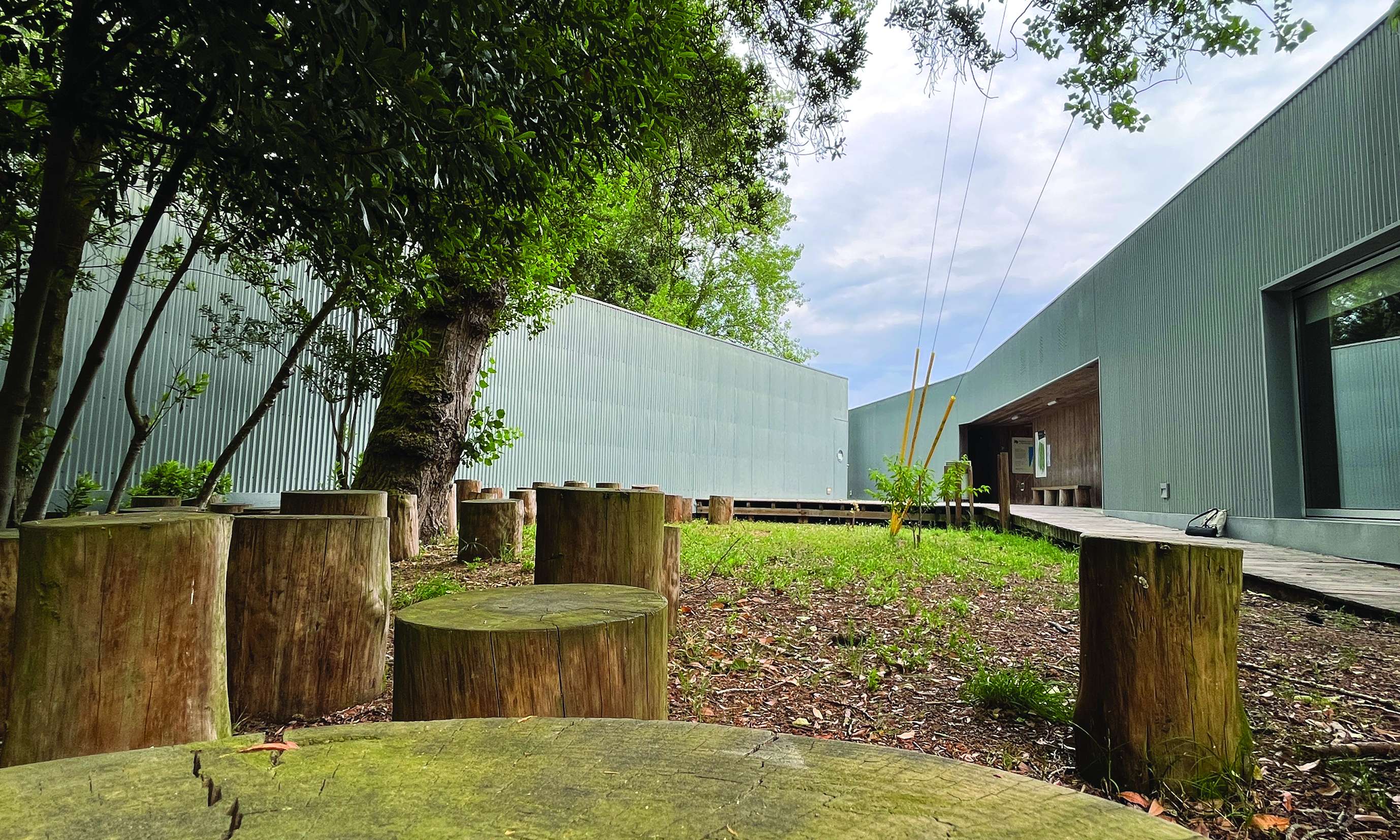
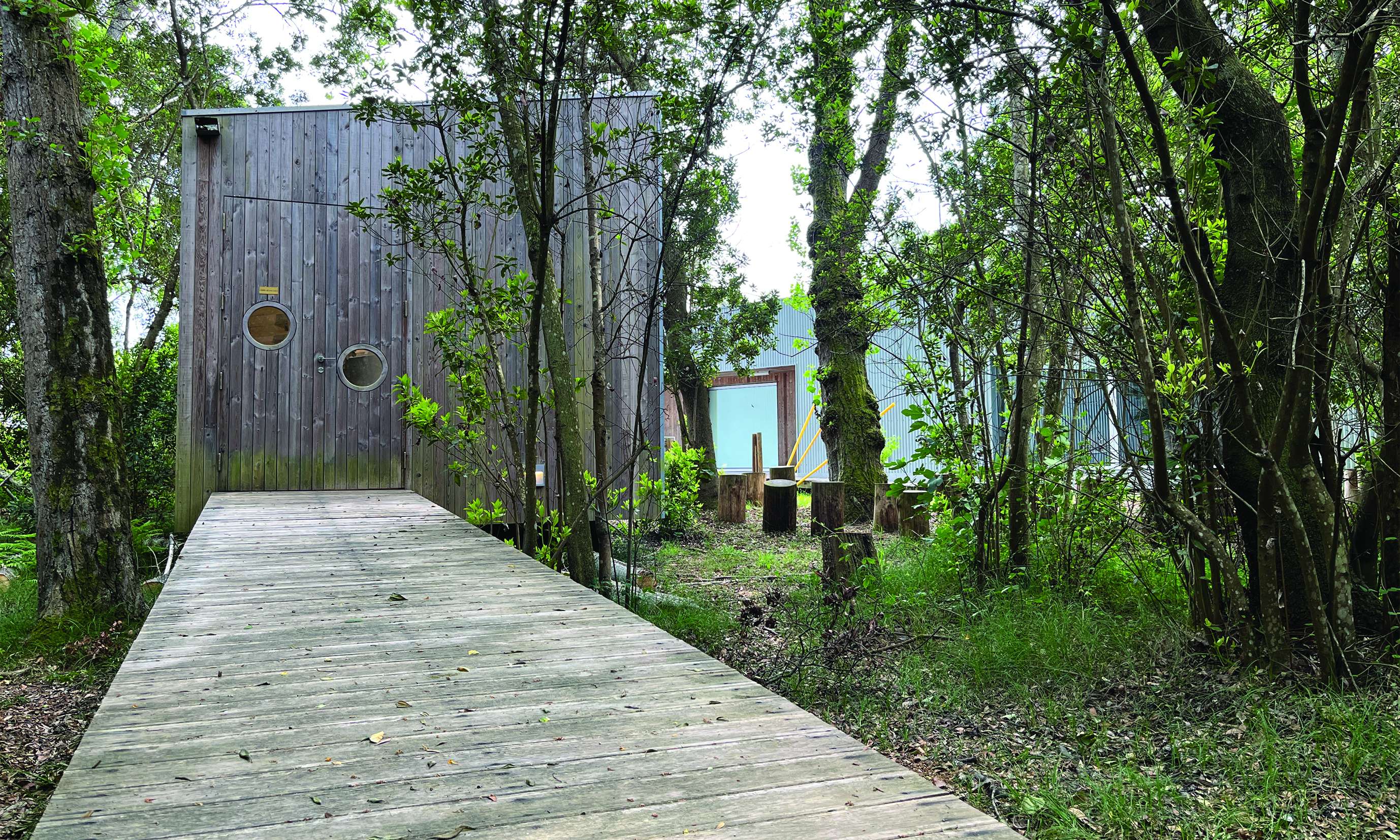

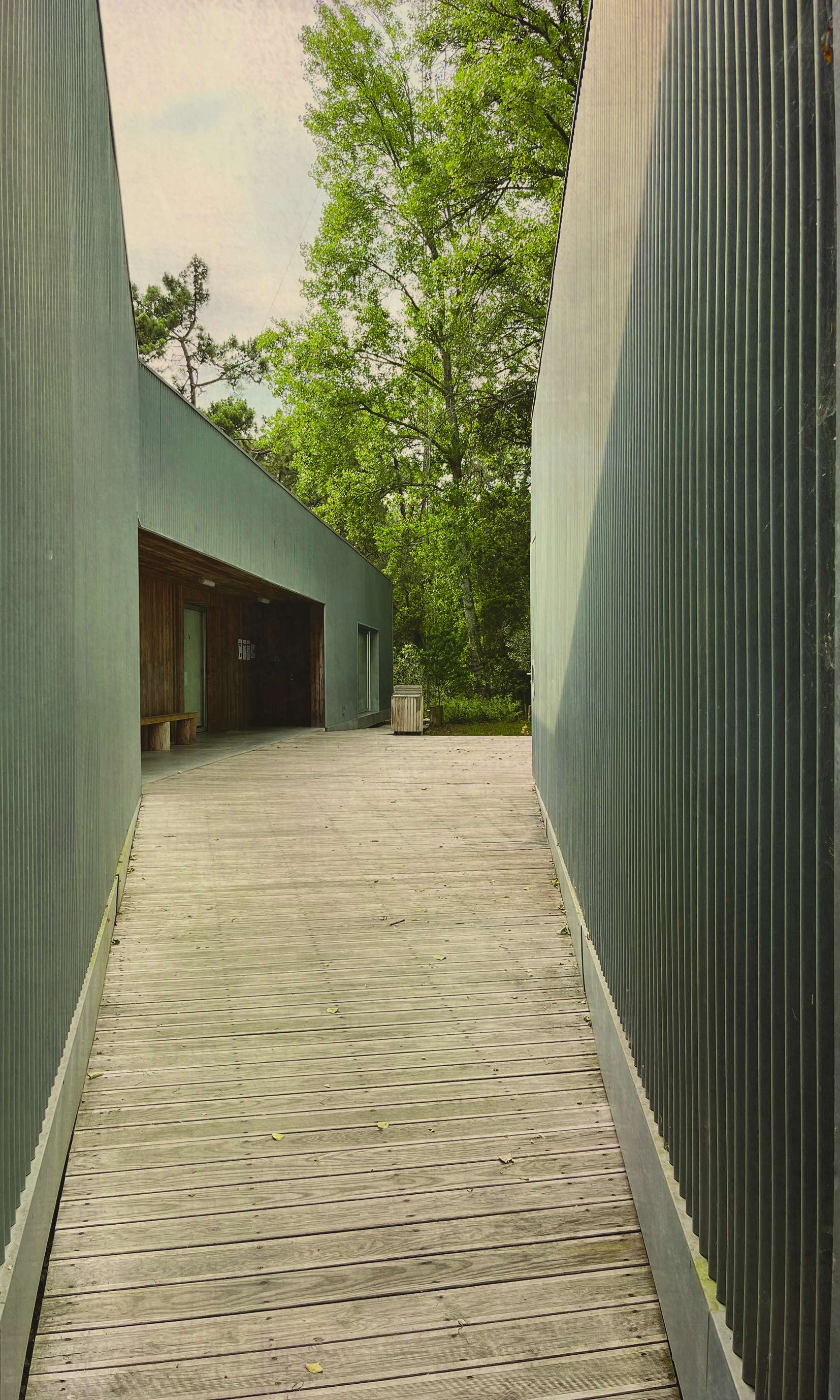
Proyecto de recalificación de los espacios de uso público en la Reserva Natural de las Dunas de San Jacinto
Projecte de requalificació d’espais d’ús públic de la Reserva Natural de Dunas d’us S. Jacinto
Requalification project of spaces for public use in the Natural reserve of Dunas de S. Jacinto
The project was a restoration study, with the aim of creating universal accessibility conditions in an established trail.
Around two kilometers long, the trail through the Reserve is the structuring element of the whole proposal; the main reason for the visit.
All the buildings arise in it and for it.
An Entrance building to the Reserve and a Reception Centre, with rooms for overnight stays, have been restored, and the Reserve's Interpretation Centre has been redesigned as a gateway, the starting and finishing point of the journey along the trail.
The shapes that the buildings acquire, the directions of the facades and the elevations of the platforms that support them, punctuate the route, extend it and complete it.
Narrow passages, openings for contemplation, spaces of concentration, chosen visual links that help to understand and interpret it, give protagonism to the landscape. The lightness with which the buildings stand on the ground allows a reading of its original profile.
The trail, which is universal, guarantees a large extension of direct contact with the earth, itself an element of learning. The arrival at the sea, behind the dunes that protect the coast, at the opposite end of the trail from the entrance, constitutes the maximum point of tension, before returning on the journey that takes us from the placid ria to the expressive Atlantic ocean.
Throughout the trail, the notion is reinforced by shelter spaces for visitors, almost ephemeral, to which they feel like coming back and staying, after a long and intense visit to the Reserve.
The construction work was marked by difficulties in the dialogue between the construction methods and the vegetation that populated the building sites, and which should be preserved.
No accesses were opened for the work. Possible accesses were sought.
As an alternative to conventional means, there was no earthwork. The plans were built over the ground, which was maintained, and the work was carried out in the shade of the vegetation.
The São Jacinto Dunes Nature Reserve is one of the rare areas on the Portuguese coast where the process of natural dune regeneration currently takes place.
Among other species, in the reserve it is possible to find an indigenous species, the "Camarinha" (Corema album), which produces edible white berries, much appreciated in the last century as a summer fruit.
Beyond the preliminary programme of the project, its aim was the search for a symbiosis between the natural and the built. Therefore, an expressive vision of the work was chosen, in the interpretation of Rita Magalhães, for its representation through photography.
